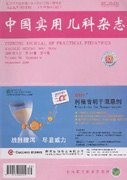|
|
Clinical features and gene analysis of three cases of immunodeficiency-centromeric instability-facial anomalies syndrome
YANG Mi*,SUN Bi-jun*,WANG Wen-jie,et al
2021, 36(2):
115-120.
DOI: 10.19538/j.ek2021020608
Objective To report the clinical,immunologic and genetic characteristics of immunodeficiency, centromeric instability and facial anomalies syndrome(ICF syndrome). So to increase our acknowledge of this disease. Methods Three cases were diagnosed with ICF syndrome in the department of clinical immunology,Children’s Hospital of Fudan University between January 2018 and December 2019. The clinical manifestations,immunological phenotypes and whole exome sequencing(WES) results were reviwed retrospectively. The clinical features and gene mutations of the disease were further summarized by literature review. Results P1 was diagnosed with ICF1 syndrome,P2 and P3 were diagnosed with ICF2 syndrome. All of the 3 patients were manifested by recurrent infection,including recurrent pneumonia,intestinal infection and sepsis,which were accompanied by facial anomalies and mental retardation. Immune function tests suggested hypogammaglobulin and decrease or absence of B lymphocytes in peripheral blood. Lymphocyte subsets testing showed memory B lymphopenia. Chromosome karyotype analysis of P1 showed centromere instability in chromosome 1. Whole-exome sequencing(WES) was performed in 3 patients and compound heterozygous mutations were identified:P1 with DNMT3B mutation:c.922-2A>G,c.2476C>T;P2 with ZBTB24 mutation:c.705delA,c.649-652delGAAG;P3 with ZBTB24 mutation:c.1237-1247del,c.460A>T. Conclusion Patients who had recurrent infection,mental retardation or facial anomalies should be suspected with ICF syndrome. Immune function assessment and genetic testing can be performed to achieve a early diagnosis and adequate treatment, so as to improve the prognosis.
|

